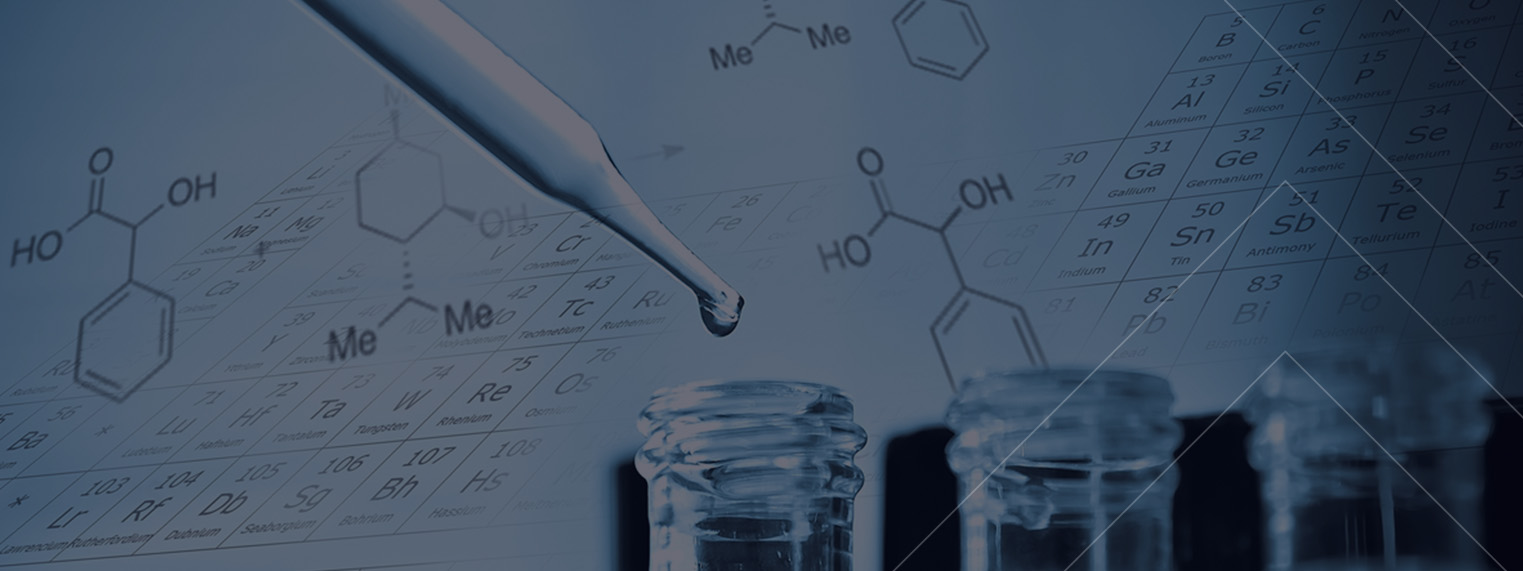
The Outlook for PFAS Market – Challenges, Growth Factors and Building Trust
The projected growth of the PFAS testing market, from $110 million in 2023 to $217 million by 2028, with a Compound Annual Growth Rate (CAGR) of 14.4%, underscores the escalating concern and regulatory focus on environmental pollution, particularly regarding Per- and Polyfluoroalkyl Substances (PFAS). This significant growth trajectory is indicative of the increasing global awareness of the potential health and environmental risks posed by PFAS contamination, which has been a persistent issue due to the widespread use and durability of these chemicals.
The primary market driver, as identified, is the greater regulatory emphasis on effective pollution monitoring and control. This driver is both a reflection of and a response to the urgent need for comprehensive strategies to mitigate the impact of PFAS on the environment and public health. Regulatory bodies worldwide are intensifying their scrutiny and control measures, which, in turn, propels the demand for advanced testing and analysis services capable of detecting and quantifying PFAS with high precision.
Moreover, the opportunity highlighted by regulatory agencies to control environmental pollution due to PFAS contamination speaks to a broader societal and economic shift. It suggests a growing market for companies and technologies that can offer innovative solutions to these environmental challenges. However, this also implies a critical need for continued investment in research and development to enhance testing methodologies and remediation technologies. The anticipated market growth, driven by regulatory actions, presents a double-edged sword. On one hand, it signifies progress towards addressing a significant environmental health issue. On the other, it highlights the ongoing struggle and the substantial work still required to mitigate the pervasive presence of PFAS. This scenario calls for a balanced approach that includes stringent regulatory measures, technological innovation, and public-private partnerships to effectively tackle PFAS contamination and protect ecosystems and human health.
Market Restraints
The challenges associated with the detection, analysis, and remediation of polyfluoroalkyl substances (PFAS) are multifaceted, extending beyond the mere presence of these chemicals in the environment to encompass the technical, infrastructural, and human resource capabilities required to effectively manage them. The United States Environmental Protection Agency (EPA) has developed methods such as SW-846 Test Method 8327 for analyzing PFAS in non-potable water using liquid chromatography/tandem mass spectrometry (LC/MS/MS), highlighting the complexity and specificity of techniques needed for accurate PFAS detection and quantification. This underscores the necessity for sophisticated laboratory infrastructure and skilled professionals capable of executing these advanced analytical methods.
Developing countries, in particular, face significant hurdles due to inadequate supporting infrastructure, which hampers the establishment of testing laboratories equipped to handle PFAS analysis. The fragmentation of manufacturing sectors in these regions further complicates sample collection, as small enterprises may lack the awareness or resources to participate in environmental monitoring efforts. This situation is exacerbated by a lack of institutional coordination and outdated standards, which can stifle the implementation of effective PFAS management strategies.
The EPA's ongoing efforts in PFAS analytical methods development and sampling research aim to broaden the understanding and capabilities for PFAS analysis, yet the global disparity in laboratory readiness remains a critical issue. The precision required for PFAS testing, as evidenced by the EPA's meticulous development of analytical methods, necessitates not only the right equipment but also consumables that meet stringent purity criteria. The selection of appropriate chromatography and mass spectrometry techniques is crucial for obtaining reliable data on PFAS concentrations, yet this decision-making process is hindered by a widespread lack of expertise.
The shortage of skilled professionals is not confined to developing nations. Advanced economies are also grappling with this issue, as highlighted by the National Technical Development Centre's (NTDC) projection of a significant demand for technicians in the UK by 2030. This shortage threatens to impede progress in environmental monitoring and public health protection, underscoring the urgent need for investment in education and training programs focused on environmental science and analytical chemistry.
The challenges of PFAS analysis and remediation are further compounded by the evolving nature of regulatory standards and the continuous discovery of new PFAS compounds, which demand ongoing methodological adjustments and validation. As such, the ability to adapt and innovate becomes as crucial as the foundational technical skills themselves.
Addressing these challenges requires a concerted effort from governments, educational institutions, and the private sector to enhance laboratory infrastructure, standardize testing methodologies, and cultivate a skilled workforce. This includes the development of comprehensive training programs that cover the latest analytical techniques and regulatory requirements, as well as fostering international collaboration to share knowledge and resources. Additionally, increasing public and private investment in research and development can drive the innovation of more efficient and cost-effective PFAS testing and remediation technologies.
Ultimately, overcoming the obstacles posed by PFAS necessitates a holistic approach that integrates scientific, regulatory, and educational strategies. By building robust analytical capabilities and expanding the pool of skilled professionals, the global community can make significant strides toward mitigating the environmental and health risks associated with PFAS.
For more details, reach out to our analysts. : https://www.marketsandmarkets.com/speaktoanalystNew.asp?id=168277170
PFAS Toxicity Mitigation and Opportunity
The U.S. Environmental Protection Agency (EPA) is at the forefront of research on Per- and Polyfluoroalkyl Substances (PFAS), a class of chemicals known for their extensive use in industry and consumer products over the decades. These substances, including notable compounds like PFOA and PFOS, are persistent in the environment and have been linked to adverse human health and environmental effects. In response, the EPA unveiled its PFAS Strategic Roadmap in 2021, outlining a comprehensive agency-wide approach to tackle the challenges posed by PFAS.
Central to the EPA's strategy is the development of robust and accurate methods for detecting and measuring PFAS in various environmental matrices, including air, land, and water. These methods are crucial for assessing the presence and concentrations of PFAS, evaluating the efficacy of remediation technologies, and informing regulatory actions. The EPA is collaborating with other laboratories to test and validate these methods, ensuring that both government and private entities can reliably measure PFAS in the environment.
Understanding the risks associated with PFAS exposure is another pillar of the EPA's research efforts. This involves identifying sources of PFAS in both outdoor and indoor environments, tracking their movement through ecosystems, and evaluating the pathways through which humans may be exposed to these chemicals. The EPA is also advancing toxicity assessments for several PFAS compounds through its Integrated Risk Information System (IRIS) Program, aiming to better understand their health impacts and support risk assessment and management decisions.
Reducing PFAS in the environment is a complex challenge that requires data on the effectiveness of various treatment, remediation, and management strategies. The EPA's research in this area includes developing and evaluating technologies for water and wastewater treatment, contaminated site remediation, air emission controls, and the safe destruction and disposal of PFAS-containing materials. These efforts are designed to inform practical solutions for mitigating PFAS contamination and preventing further exposure, particularly in communities disproportionately affected by pollution.
Navigating Chemical Industry and PFAS
The chemical industry is at a pivotal juncture as it navigates the evolving landscape of regulations surrounding Per- and Polyfluoroalkyl Substances (PFAS). These chemicals, integral to numerous applications due to their resistance to heat, water, and oil, are now under intense scrutiny due to their persistence in the environment and potential health risks. The industry faces the dual challenge of complying with tightening regulations while seizing the opportunities these changes present.
Product segmentation analysis reveals the diverse applications of PFAS, from firefighting foams and non-stick cookware coatings to water-repellent fabrics and industrial processes. Each segment's response to regulatory changes varies, with some sectors, like the textile and packaging industries, actively seeking alternatives to PFAS to align with consumer safety concerns and environmental sustainability goals. Meanwhile, sectors where PFAS are deemed critical for performance, such as in certain medical applications and high-tech manufacturing, are focusing on innovation to reduce environmental impact without compromising functionality.
The implications of these regulatory shifts are profound. Companies are investing in research and development to discover safer alternatives and improve PFAS treatment technologies, driving a wave of innovation within the industry. This transition not only addresses environmental and health concerns but also opens new markets for eco-friendly products and advanced remediation solutions.
The chemical industry's approach to PFAS regulations is evolving as a reference for corporate responsibility and sustainability practices. Companies leading the charge in transparency, environmental stewardship, and innovation are setting new standards, enhancing their brand reputation, and gaining a competitive edge.
The evolving PFAS regulations present both challenges and opportunities for the chemical industry. Through product segmentation analysis, it's clear that the path forward involves embracing change, fostering innovation, and prioritizing sustainability to meet regulatory demands and consumer expectations in a responsible manner.
Inquire Now : https://www.marketsandmarkets.com/Enquiry_Before_BuyingNew.asp?id=168277170
Case Study – Nanoramic
Nanoramic Laboratories, a company that originated from the Massachusetts Institute of Technology (MIT) in 2009, has partnered with E-Lyte Innovations GmbH to pioneer groundbreaking battery technologies. This collaboration is centered around Nanoramic's Neocarbonix® at the Core electrode technology and E-Lyte's high-performance electrolytes, aiming to develop an advanced PFAS-free alternative for electric vehicle (EV) batteries. Nanoramic's Neocarbonix technology offers a PFAS-free solution that enhances battery performance by increasing energy density, reducing charge times, and lowering costs, while E-Lyte focuses on optimizing this performance with customized electrolytes.
This strategic R&D partnership is poised to address potential supply chain disruptions due to impending PFAS restrictions, offering a commercially viable high-performance solution for EV batteries. The collaboration underscores a commitment to advancing the mass adoption of EVs by developing sustainable battery technologies that circumvent the challenges posed by proposed PFAS restrictions.
In a parallel development, Nanoramic Laboratories has been recognized for its innovative approach to eliminating harmful 'forever chemicals' from EV batteries, thanks to its Neocarbonix at the Core technology. This technology replaces conventional binder systems with a 3D nanocarbon mesh, effectively removing PFAS from the manufacturing process. Supported by a strategic investment from GM Ventures, Nanoramic is working on designing batteries for GM's core categories, with expectations to integrate these batteries into GM vehicles by 2025.
Moreover, Nanoramic's commitment to sustainability and innovation extends to its collaborations with other startups like E-Lyte and RecycLiCo Battery Materials. These partnerships aim to develop electrolytes compatible with Neocarbonix electrodes and establish a sustainable battery supply chain through recycling. Nanoramic's efforts to create PFAS-free electrodes and its collaborations highlight the company's role in driving forward the EV industry's growth while addressing environmental concerns.
Together, these initiatives represent a significant step towards the development of more sustainable and efficient EV batteries, reflecting a broader industry trend towards eliminating harmful substances and enhancing battery technology for future generations.
Testing and Trust
Per- and Polyfluoroalkyl Substances (PFAS) are a group of man-made chemicals that have been used in various industries around the globe since the 1940s. Due to their widespread use and environmental persistence, PFAS have become a significant concern for public health and safety, particularly regarding their presence in the food supply. The U.S. Food and Drug Administration (FDA) has been at the forefront of addressing these concerns through comprehensive analytical testing, regulation of authorized uses, and ongoing research and analysis.
1. Analytical Results of Testing Food for PFAS
The FDA has conducted extensive testing on the food supply to assess the levels of PFAS contamination resulting from environmental sources. These efforts are part of the FDA's broader strategy to ensure the safety of the food Americans eat. The testing has included a wide range of foods, including produce, dairy products, and seafood, collected from across the United States. The analytical results have shown that most foods tested have PFAS levels below the current limits of detection, suggesting a minimal risk to the general population from PFAS exposure through food. However, in instances where PFAS have been detected, the FDA has taken steps to assess the potential health risk and work with state and local agencies to address the contamination at its source. This proactive approach underscores the FDA's commitment to using science-based methods to protect public health.
2. Authorized Uses of PFAS
Recognizing the potential risks associated with PFAS, the FDA has also focused on regulating the authorized uses of these chemicals in food contact applications. PFAS have been used in non-stick cookware, in gaskets and seals for food processing equipment, and in materials that come into contact with food, such as grease-proof paper. The FDA's regulatory oversight includes evaluating the safety of PFAS compounds before they can be used in contact with food, ensuring that any potential migration into food is within safe limits. Over the years, the FDA has worked to phase out certain PFAS compounds from food contact applications, reflecting new scientific information and evolving public health concerns. The agency's efforts to regulate and, where necessary, restrict the use of PFAS in food contact materials demonstrate a rigorous application of scientific evidence to protect consumers.
3. Research, Testing & Analysis
The FDA's engagement with PFAS extends beyond testing and regulation into comprehensive research, testing, and analysis to better understand the behavior, exposure pathways, and health effects of these chemicals. This work includes developing new analytical methods to detect PFAS at lower levels in food and the environment, conducting studies to understand how PFAS accumulate in food crops, and evaluating the health implications of long-term exposure to low levels of PFAS. The FDA collaborates with other federal agencies, academic institutions, and international partners to advance the science of PFAS and inform risk assessments and regulatory decisions. This collaborative research effort is critical for developing effective strategies to minimize PFAS exposure through the food supply and protect public health.
80% of the Forbes Global 2000 B2B companies rely on MarketsandMarkets to identify growth opportunities in emerging technologies and use cases that will have a positive revenue impact.
- Food Packaging Market Size Set for Strong Growth Through 2030 Amid Rising Demand for Convenience Foods
- Fertilizers Industry Set to Grow at 4.1% CAGR Through 2030
- Leading Automated Guided Vehicle Companies 2024: An In-depth Analysis
- CHARGED UP: SHIFT TO E-MOBILITY AND THE EVOLUTION OF TRANSPORTATION
- Global Automotive Market: Predictions For 2024
This multifaceted approach to addressing PFAS in the food supply—through analytical testing, regulation of authorized uses, and ongoing research—reflects a comprehensive strategy to manage the potential risks posed by these chemicals. By leveraging scientific evidence and regulatory tools, the FDA aims to ensure the safety of the food supply and protect consumers from the potential health effects of PFAS exposure.
Download PDF Brochure : https://www.marketsandmarkets.com/pdfdownloadNew.asp?id=168277170



